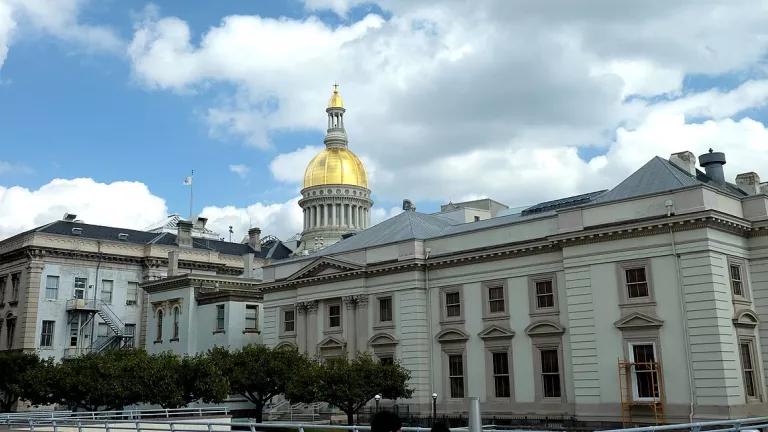Net metering (NEM), which at its core is a simple policy that credits utility customers at the full "retail rate" for the solar power they generate and supply back to their local utility grid, is seeing a wide divergence in how it is being managed across the country these days. But there is little doubt that the policy has led to impressive gains toward growing the rooftop solar market in recent years.
The growth is happening in sunnier states like California, Hawaii, and Arizona, as well as in cooler climate states like Minnesota, New Jersey, New York, and North Carolina. These states are experiencing substantial contributions from the hundreds of thousands of utility customers who have leveraged net metering to help them take the plunge to "go solar" - turning their properties into a clean energy asset that powers not only their home but also their local neighborhood and beyond. As of mid- 2015, 784,000 homes and businesses had gone solar. And as President Obama said in his State of the Union address last week, more Americans today (209,000) are employed in solar than the coal industry.
Growth unlike any seen before
The rapid growth of rooftop solar power generated from photovoltaic panels is unlike anything we've witnessed in the electric power industry. Net metering policy--which is active in at least 42 states, in addition to state renewable portfolio standards, the federal investment tax credit (now extended!), and the American love affair with solar energy--are the main drivers of this revolutionary change. Utilities suddenly have to learn how to manage new sources of electricity generation coming from thousands of customers, each with their own unique day-to-day usage of the solar energy they produce but who still rely on the electric power grid when the sun isn't shining.
The unforeseen rapid growth in customer rooftop solar on a decades-old, single direction electric power grid naturally creates uncertainty, which provides the spark and kindling to ignite fear and anxiety among regulators, utilities and consumers. Regulators are asking: How do we account for the economic impacts, i.e. benefits and costs to solar customers as well as non-solar ones? Utilities ask: Can an antiquated transmission grid handle thousands of new rooftop solar customers? And consumers want to know: How does this impact my monthly utility bill? Will policies be reliable enough to make a good financial decision to invest in rooftop solar?
For most places net metering provides a good reasonable approximation of the balance of costs and benefits and serves to compensate rooftop solar owners at the full retail rate. But as solar (including rooftop and large "utility-scale" solar farms) becomes a major resource for electricity generation, which is the case in places like in California, Arizona and Hawaii, key questions must be considered, including:
- How much should solar customers pay to make sure the grid is available at times when they aren't generating and therefore need to "import" electricity?
- Are non-solar customers essentially subsidizing the transmission system to make up the difference?
- And as more solar comes online, should utilities still be paying their customers the same rate for solar even when there's not a high need for it on the transmission system, or should it be similar to the different rates they pay for other resources?
Policy makers must evaluate all of these concerns, but policy making does not happen in a vacuum. Political agendas prioritize concerns that drive decisions. In the case of net metering, the two political agendas at odds are that utilities don't want to risk losing financial recoupment for their investments in the grid to serve all customers while rooftop solar developers don't want to lose business opportunities if their potential customers are not compensated as highly by utilities when excess rooftop solar generation is sent back to the grid. Fear and anxiety fueled by rhetoric from "rooftop solar versus utilities" reached the Hawaii and Nevada regulators who hastily reached for the control of last resort--the circuit breaker, putting everyone in the dark.
Headlines from Nevada announcing 550 solar jobs are now gone and a new class action lawsuit from existing rooftop solar owners against the utility NV Energy, represent the latest unfortunate example of how decisions to dramatically change the compensation level for solar customers can have wider implications. Hawaii also saw a rash decision to abruptly end net metering altogether late last year. And lost jobs are not the only thing to mourn. The rooftop solar owners who expected a reasonable return on their investment are now on their own. And every customer in Nevada and Hawaii is hurt, as well, with millions of dollars' worth of transmission grid benefits from potential grid-tied rooftop solar now evaporated.
A better way
Fortunately, states like California and New York have shown there's a better way. And it's important to remember that the same uncertainty of not knowing exactly which customers will choose to go solar and how fast the market will grow exists in these states, too.
Instead of abruptly ending net metering by reaching for the circuit breaker--adding even more market uncertainty and hurting business and potential job growth--these states' utility commissions wisely opted to take a deep breath, study the issues by gathering market and grid impact analytics, and set reasonable timelines to make decisions about the future of net metering. And they have assured existing net metered customers their generation will continue to be credited at the full retail rate, which is a good, reasonable approximation for the benefits they provide to the grid.
California has completed these steps. New York has made an initial decision to leave its net metering format largely in place as it moves to gather data and set decision points over the coming year to possibly recalibrate the policy to more fully reflect both the benefits and costs of distributed (onsite) generation, which includes rooftop solar.
The choices couldn't be clearer for state policymakers pondering what to do about net metering and compensating distributed generation: either be smart like California and New York who remain open for business for rooftop solar and keep the jobs that come along with it--or trip the one key circuit that spurs rooftop solar development. We will continue to closely work alongside our solar and clean energy allies in the more than forty states that are either actively reviewing or scheduled to review this year, net metering or rooftop solar compensation rates by lighting the better way forward to a healthy and sustainable solar market growth for the good of our wallets and planet.



